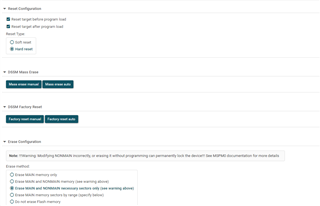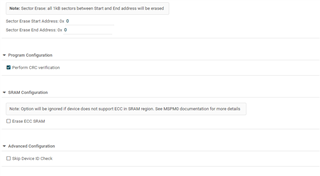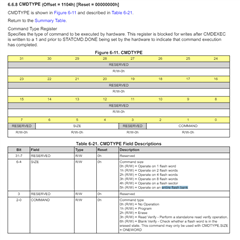Other Parts Discussed in Thread: , UNIFLASH
Tool/software:
Hi TI Teams,
I am currently assisting my customer in programming the MSPM0G3507 IC, but I have encountered some programming problems and would like to ask for advice.
The programming interface I use is SWD. For the burning process, please refer to Chapter 6 of the Technical Reference Manual.
The blocks that customers need to program include Code (Flash) and NVM (NONMAIN).
There was no problem when I programmed it for the first time. I can read and communicate with the IC without any problem after the first programming.
The process and sequence of the first programming were Erase, BlankCheck, Program and Verify.
I will first complete the programming and verification of Code(Flash) and then perform the programming and verification of NVM(NONMAIN).
And when I want to program the IC for the second time, any operation on the IC will fail after the Code(Flash) is erased.
Then if you try to communicate with the IC again through SWD, it will fail.
The settings of guest NVM (NONMAIN) are as follows. The rest are factory settings.

Is it possible that I erased Code (Flash) when NVM (NONMAIN) has been modified, causing the IC to fail to erase and fail to communicate.
If so, should I erase NVM(NONMAIN) first and write it back to the factory value during the subsequent programming process?




 \
\





